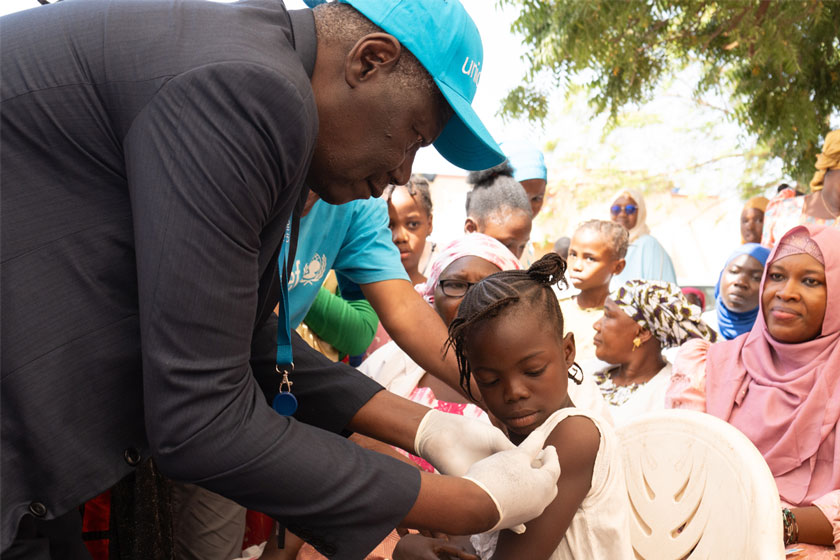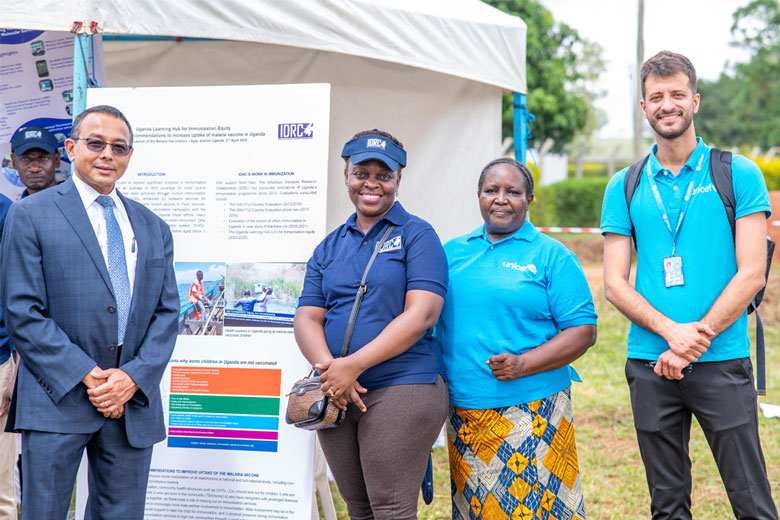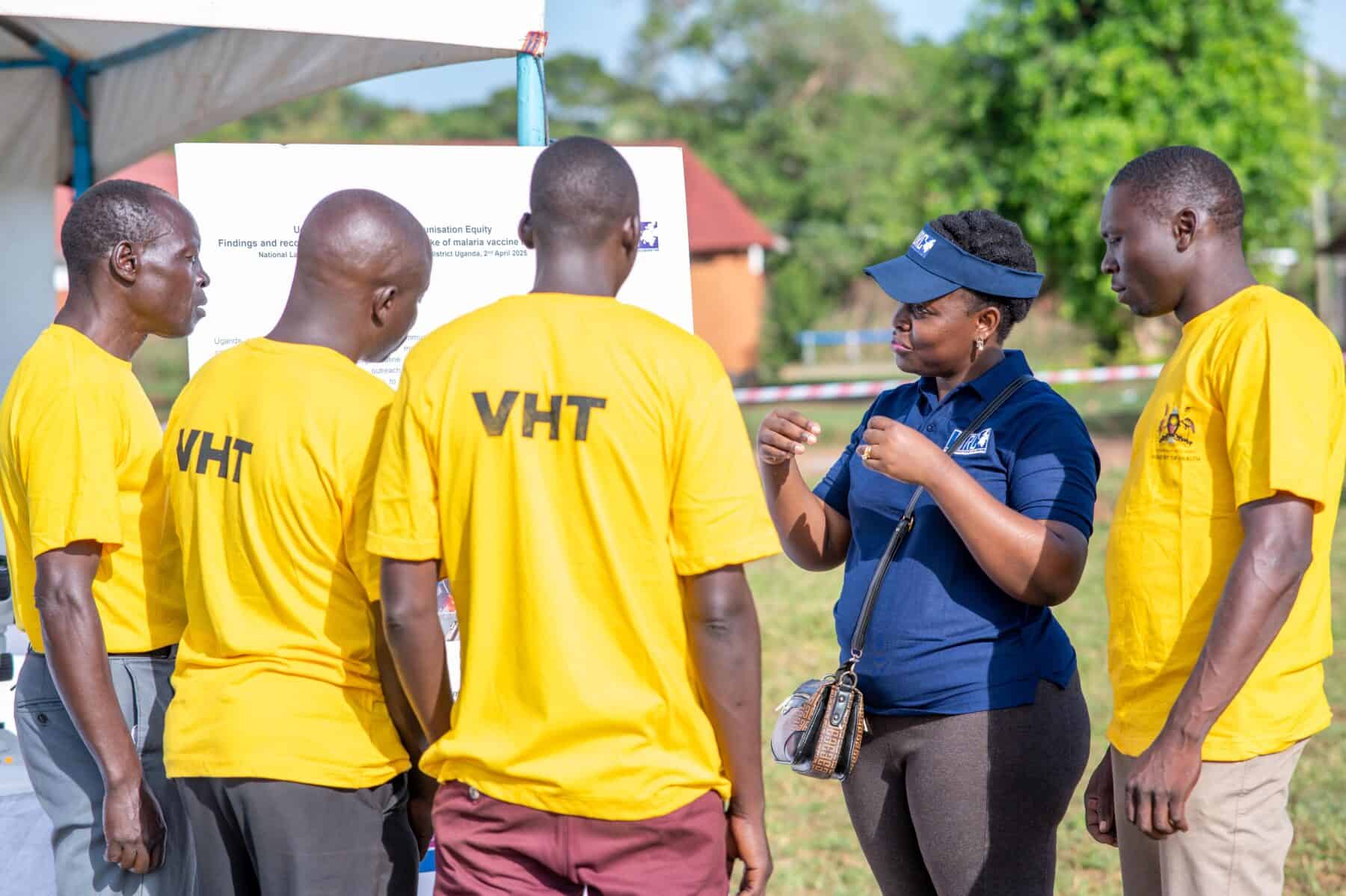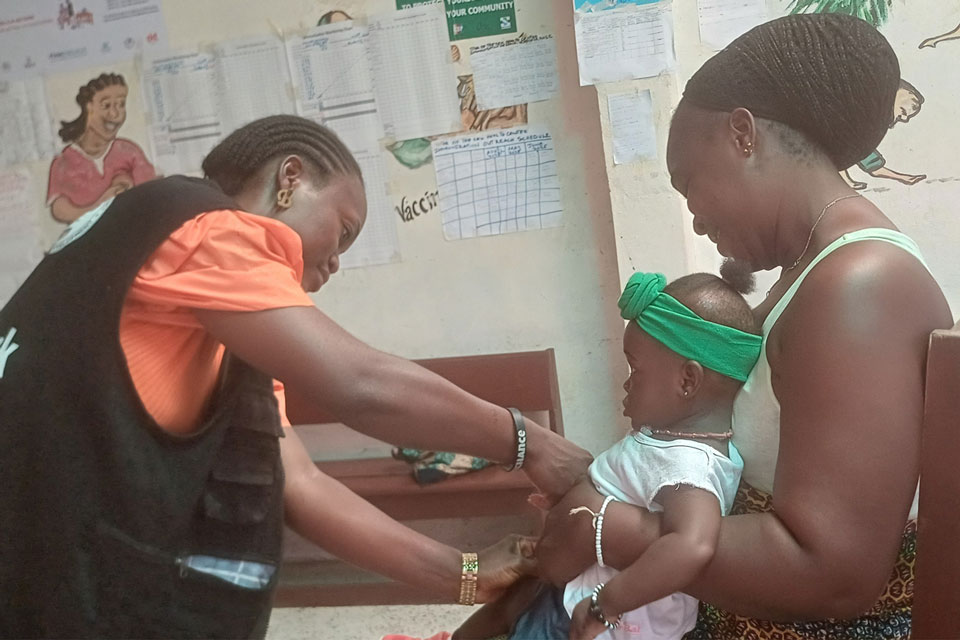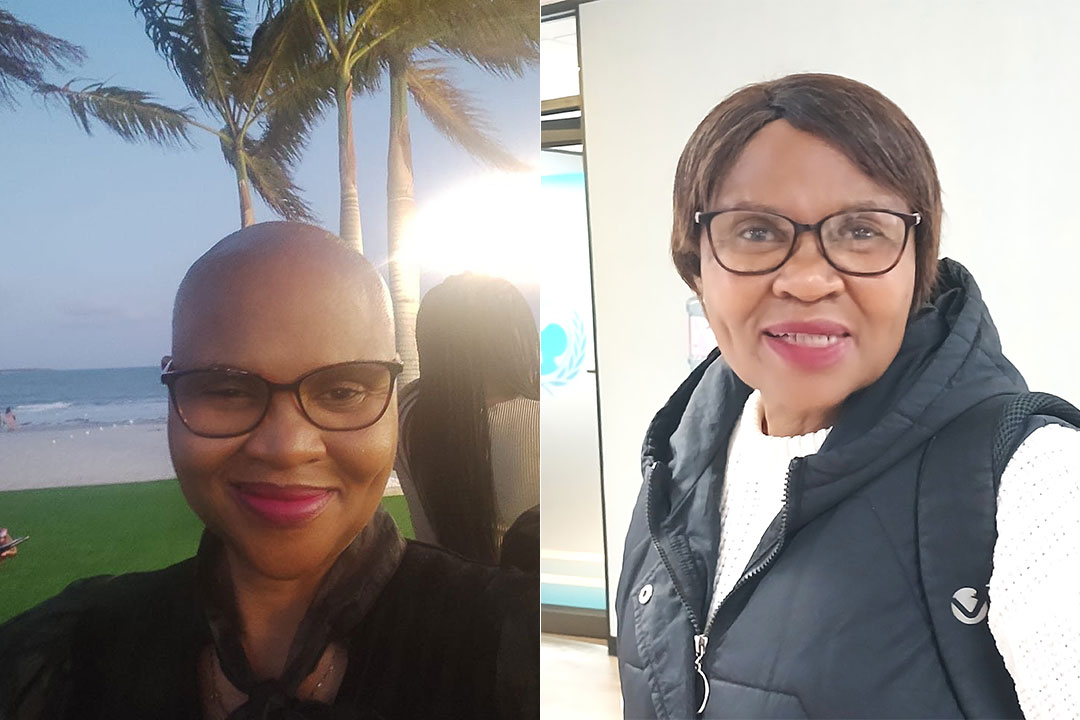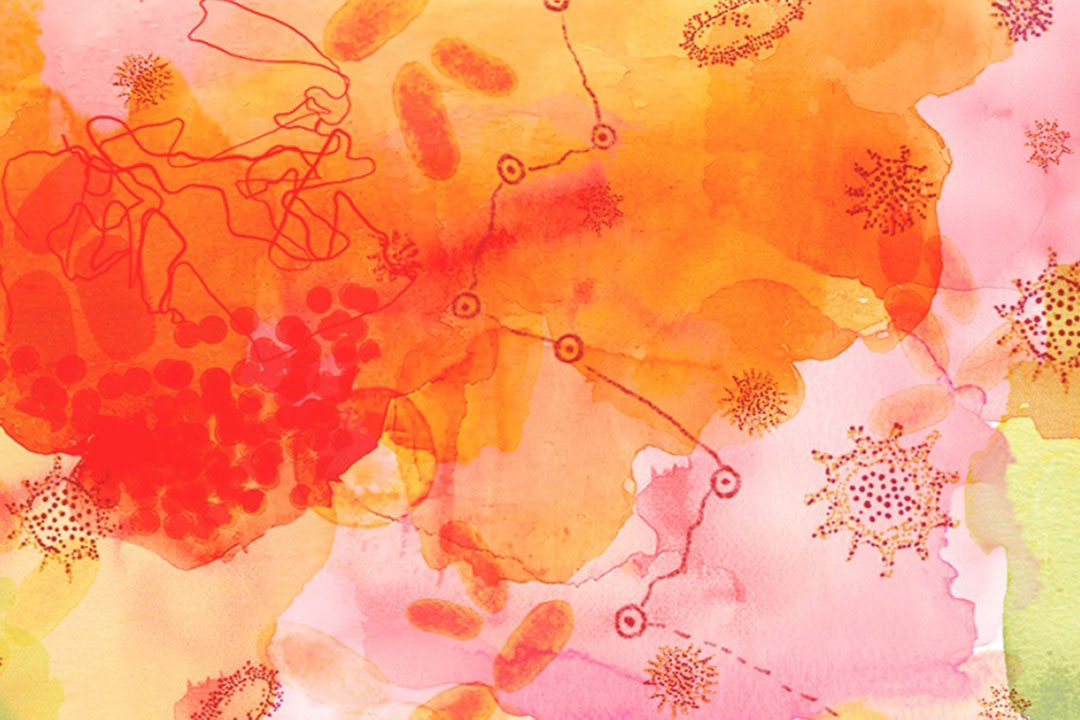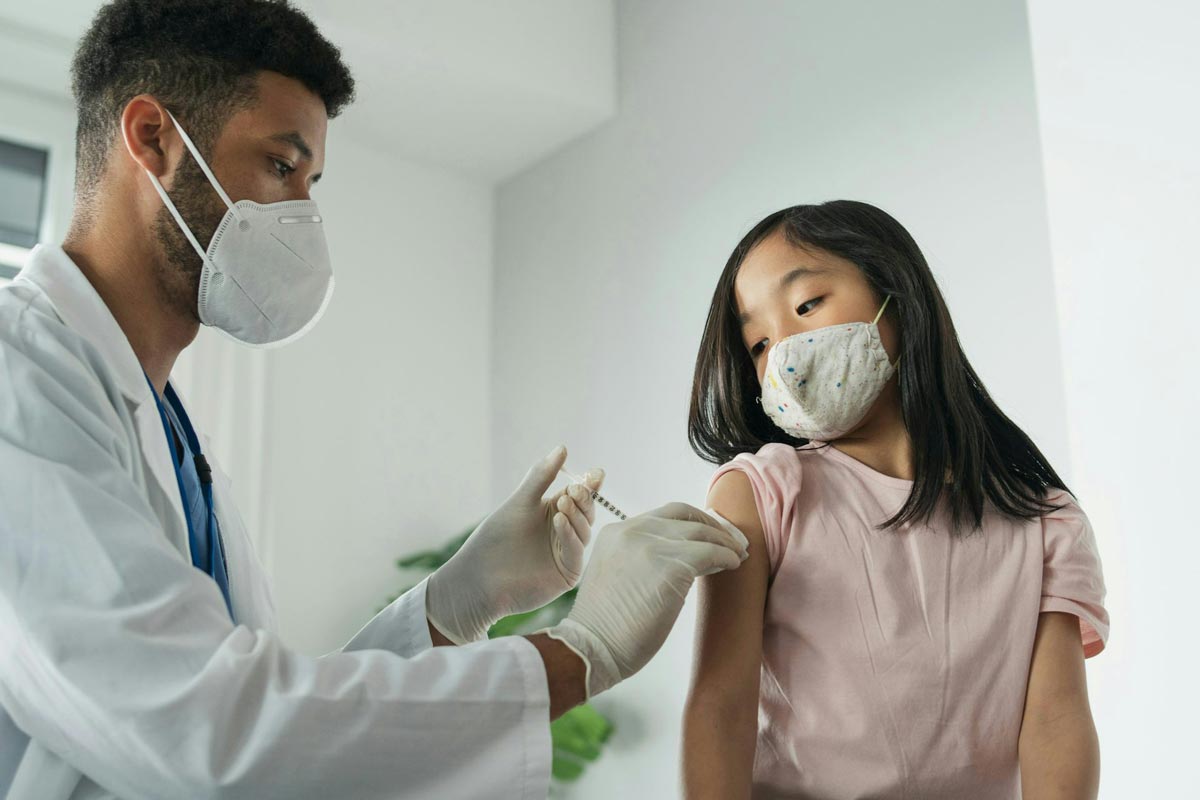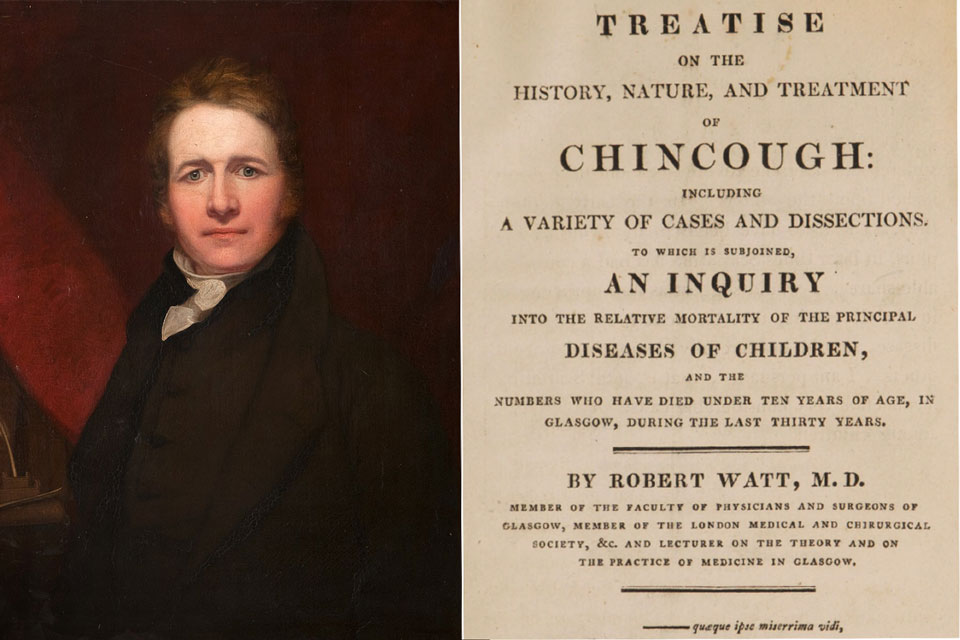Preventing cervical cancer in Mozambique, Sao Tome and Principe, and Guinea-Bissau
Virtual exchange is a low-cost learning opportunity.
- 6 August 2025
- 8 min read
- by JSI
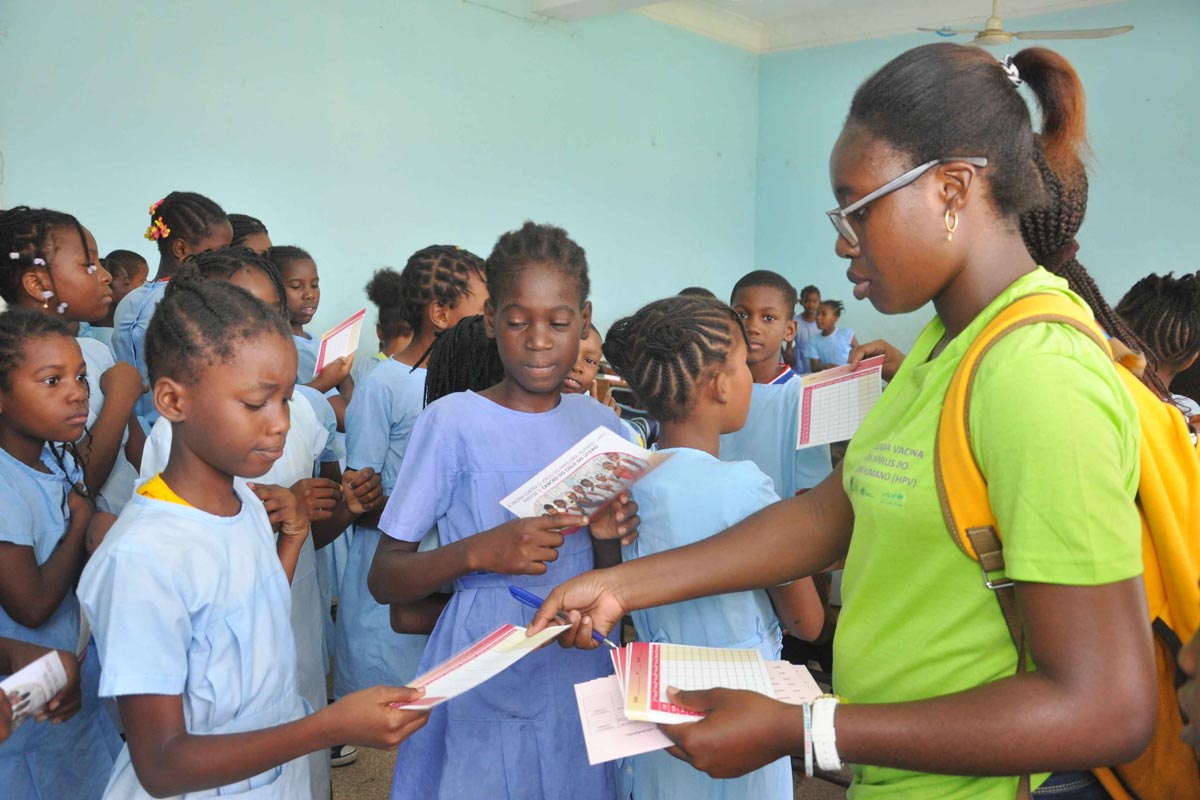
On 24 June, Expanded Programme on Immunization (EPI) managers and partners from Mozambique, Sao Tome and Principe, and Guinea-Bissau gathered online for a virtual “coffee chat” to share lessons from their experiences of introducing the human papillomavirus (HPV) vaccine.
“Despite having the same language, these three countries have different socioeconomic, geographic, political and cultural contexts, which – in a way – influence the implementation of vaccination programmes,” explains Betuel Sigaúque, Country Project Director for JSI/Mozambique. “And yet, all three countries share the aim of accelerating the elimination of cervical cancer and reducing maternal mortality from cervical cancer.”
There are many strains of HPV, some of which are known to cause cancers. Cervical cancer is the most prevalent form of HPV-linked cancer, and without early diagnosis and timely treatment, it often proves fatal – especially for people living with HIV. In 2018, 19 of the top 20 countries with the highest rates of cervical cancer were in sub-Saharan Africa. But the disease is also preventable: the HPV vaccine is a safe and effective way to block HPV transmission and head off the threat of cervical cancer.
Mozambique, Sao Tome and Principe, and Guinea-Bissau have all recognised the threat that cervical cancer poses to their people, and have made HPV vaccination a national priority. Each country is now at a different stage of their HPV vaccine roll-out. Given that many resources on HPV vaccination are not available in Portuguese, it was valuable to create a space for health leaders from these countries to share lessons in their official national language. What follows is a summary – in translation – of key lessons shared during what proved to be a rich and interesting discussion.
1. Single-dose regimens improve outcomes
All three countries’ representatives agreed on the benefits of a single-dose HPV vaccine regime. Mozambique introduced the HPV vaccine to its routine immunisation schedule in 2021, in the two-dose regimen that was originally recommended by the World Health Organization (WHO). But when WHO updated its guidelines in 2022, the country switched to a single-dose protocol.
“Transitioning to the single-dose regimen was a huge help,” said Dr Brighton Muculuve, a physician who has been leading monitoring and evaluation at the Mozambique EPI for the past three years. Dr Muculuve explained that there were challenges in effectively communicating the vaccine schedule, so many clients and caregivers had remained unaware that they needed to come back in for a second dose.
Dr Solange Ednilza, who has run Sao Tome and Principe’s vaccination programme for the past eight years, agreed.
“Sao Tome and Principe had very low coverage for the second dose, below 50%, but with this change from two to one dose, we can reach a greater number of children with just one dose of vaccine and achieve better vaccination coverage, especially in more remote areas. So far, we’ve had great acceptance from the community.”
Guinea-Bissau has yet to introduce the HPV vaccine. They submitted a proposal to Gavi for support in December of 2024, and are currently in the planning stage. “We’re learning with Mozambique and Sao Tome and Principe, and we’ve taken into account the challenges they faced,” said Dr Neusa Samy, Director of EPI Guinea-Bissau. “That’s why we opted for the single dose right away, so as not to have to go through the same problems they did.”
2. Multi-pronged advocacy strategies work
Despite being located in different parts of Africa and with different population sizes , Mozambique and Sao Tome and Principe shared similar challenges around HPV vaccine misinformation.
“We had challenges at first with resistance from community members as a result of misconceptions around vaccination, and some resistance persists,” says Dr Ednilza. “But we have still been able to achieve good coverage by passing on accurate information to the media and with the support of community health workers. Additionally, we’ve opted to integrate accurate information about HPV and cervical cancer into schools, which has given good results, and we’ve managed to reach a large number of children, since 98% of our girls are in school.”
Although Mozambique also engaged the education sector to reach girls with cervical cancer prevention awareness, they have a lower education rate than Sao Tome and Principe. To compensate, their EPI focused more heavily on the environment surrounding the girls: their guardians, religious leaders and broader communities. “While these [misunderstandings] felt like huge challenges at the beginning, now everything is normalising,” says Elisa Nambale, who works at Mozambique’s EPI in Communication and Demand Creation.
“Guinea-Bissau is already talking to the Ministry of Education. We’ve already spoken to some teachers and school principals. We’re thinking about introducing something into the school curriculum,” said Dr Samy. “Since it’s a new vaccine, we’re well aware that we’re going to be faced with the same challenge.”
3. Accurate data fuels the engine
For years, in Guinea-Bissau, cervical cancer was close to invisible: a lack of diagnostic data meant the prevalence of the disease among girls and women was all but unknowable.
“We have not done [HPV] surveillance or data collection as a country, so we didn’t have great data on the number of girls who get cervical cancer,” Dr Samy explained. “But since we’ve been working with other NGOs that deal with girls’ health, they collect and share their data from their programmes. We were very concerned when we saw just how many girls were being affected by cervical cancer. We showed this data to the Minister of Health and his team of directors-general, and he agreed that it was important to introduce the HPV vaccine in our country. If a vaccine exists, why would we let our girls die?”
Statistics were key to setting Guinea-Bissau’s HPV vaccination efforts in motion. Keeping them in motion also requires continuous planning and a steady feed of data.
“In Mozambique, we’re using data from the population census carried out in 2017 and its projections over the years, compared with other vaccination campaign data. While we have an estimate of who should be reached [with the vaccine], there is always a significant difference between that estimate and what we find on the ground,” says Dr Muculuve. “This, in a way, may mean that we don’t reach all the eligible adolescents.”
Sao Tome and Principe had a similar experience. “We have been working constantly with the National Statistics Institute to remedy this problem,” said Dr Ednilza.
4. Resource availability, flexibility and reliability
One challenge shared by the countries was reliability of resources – financial, staff capacity and infrastructural – which can inhibit country immunisation programmes. For example, while multi-age cohort campaigns can be effective for vaccine introduction and, in a practical sense, to reach a large number of girls at one time, they are resource-intensive. Of the three countries, thus far only Sao Tome and Principe have managed to run a multi-age cohort campaign. It proved a strain on both financial and staff resources.
“We initiated the multi-age cohort [campaign] in 2019, which proved to be an additional logistical challenge. Because it covered girls aged 9 to 14 instead of just one age, the increased volume of eligible girls was not met with equally increased [health system] human resources required to cover the entire nation. That meant it took much longer to cover this age group,” Dr Ednilza says.
Guinea-Bissau’s health sector also faces resource constraints, including for immunisation.
But Dr Samy is optimistic about the sustainability of including the HPV vaccine in the EPI schedule: “The Gavi team created a management unit for helping manage funds and programmes better [than before]. Currently, the EPI is carrying out activities regularly and there is no funding challenge.”. Currently, the EPI is carrying out activities regularly and there is no funding challenge.”
“Mozambique is in the same position; our government covers 20% of our vaccination programme, and 80% is covered by Gavi,” says Dr Muculuve. “But one of the aspects that makes Mozambique unique is its geographical location, which makes us susceptible to extreme weather events. These end up not only destroying the investments that are being made, but also weakening the health system in general. The challenge is that Gavi funds are only approved for very specific uses. In times of emergency, we would greatly benefit from more flexible funds, but currently this is not possible.”
Have you read?
Maintaining momentum
By the end of the conversation, JSI’s Sigaúque was grinning. “It was so valuable to hear from these different countries. In some cases, one country’s solution may not work because the context is different, but in other cases it can spark an idea for another.”
“I’m especially happy for us here in Guinea-Bissau,” says Dr Samy. “We have this opportunity to learn from these lessons as we implement our first HPV vaccine campaign, and maybe don’t have to learn the hard way like the others.”
“I hope meetings like this continue, not only for HPV vaccination, but also for routine vaccines or one or other vaccines,” says Dr Ednilza.
